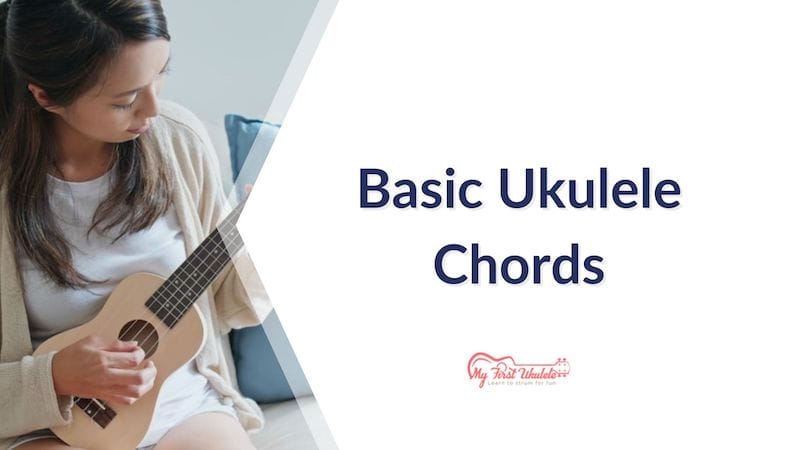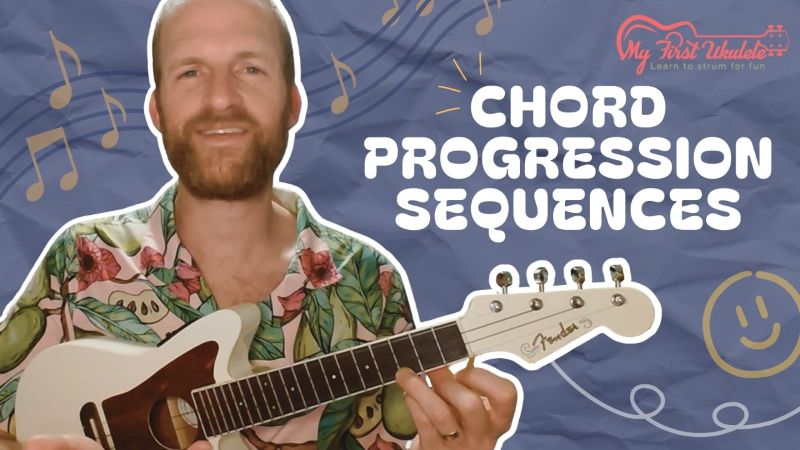Major and minor chords give your ukulele playing its mood; happy or sad, bright or dark. Knowing the difference helps you play with purpose and emotion.
Have you ever strummed a chord and thought, “Why does this one sound bright and happy, while that one feels more serious—or even a little sad?” If you’ve been wondering about the difference between major and minor chords, you’re not alone. I get this question a lot from my students, so I decided to walk through it in a way that’s easy to follow and fun to play.
In this lesson, I’ll take you through the difference using two familiar chords: A major and A minor. You’ll see how just one small change (literally lifting a single finger) can completely change the way a chord sounds and feels. We’ll also explore what’s actually happening behind the scenes, so you’ll not only hear the difference but understand it.
Let’s get started!
Let’s Start Playing: A Major vs A Minor
I always like to dive right into playing because that’s where the magic happens. So grab your uke and let’s build an A major chord together:
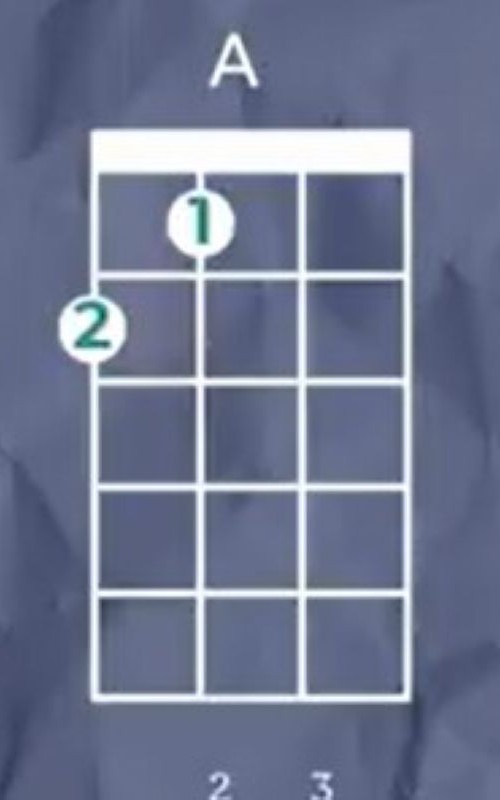
- Put your second finger on the second fret of the fourth string.
- Then place your first finger on the first fret of the third string.
- Leave the second and first strings open.
Give it a strum. That’s your A major chord. To me, it sounds clean, open, and maybe even a little joyful.
Now, without moving anything else, lift your first finger off the fretboard. That’s it.
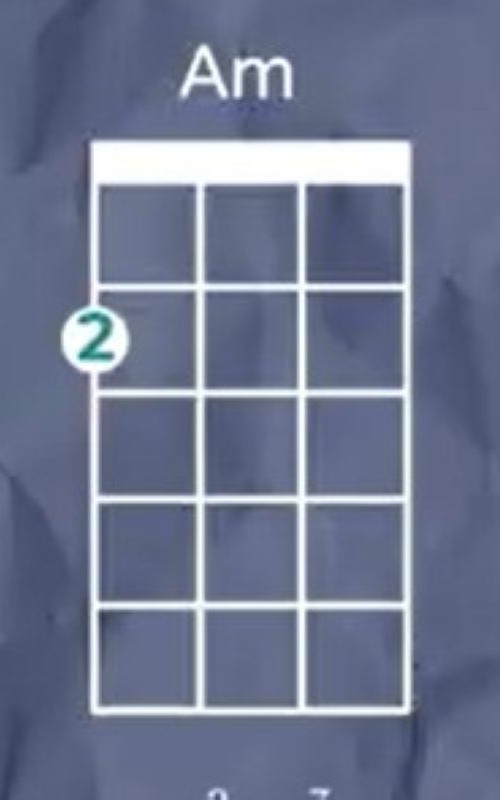
Now you’ve got:
- Just your second finger on the second fret of the fourth string,
- Everything else is open.
Strum that. That’s A minor. Same root note—still an A—but a totally different emotional feel. More reflective. A little moodier. And all we did was lift one finger.
What’s Going On in the Chord?
So why does lifting that one finger change everything?
Well, it comes down to something called the third of the chord. When I say “third,” I’m not talking about the third string. I mean the third note in the scale that builds the chord.
Here’s what makes up an A major chord:
- A (root)
- C♯ (major third)
- E (fifth)
And here’s A minor:
- A (root)
- C (minor third)
- E (fifth)
That’s it—the only change is that C♯ becomes C. But that small shift, just one fret lower, is what transforms the chord from major to minor.
“Major just means there’s a larger space between the first note and the third,” I tell my students. “Minor makes that space a little smaller. Just a half step.”
That’s what we call a minor third. It’s not just a theoretical label, it’s what gives the chord its emotional tone.
Hearing the Mood Shift: Mary Had a Little Lamb
Let’s put these chords into a real musical example. One of my favorite ways to help students feel the difference between major and minor is to use a familiar tune like Mary Had a Little Lamb.
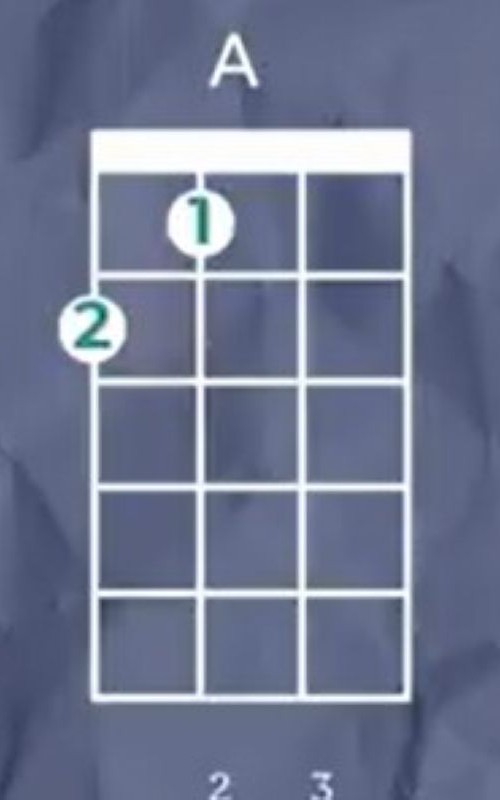
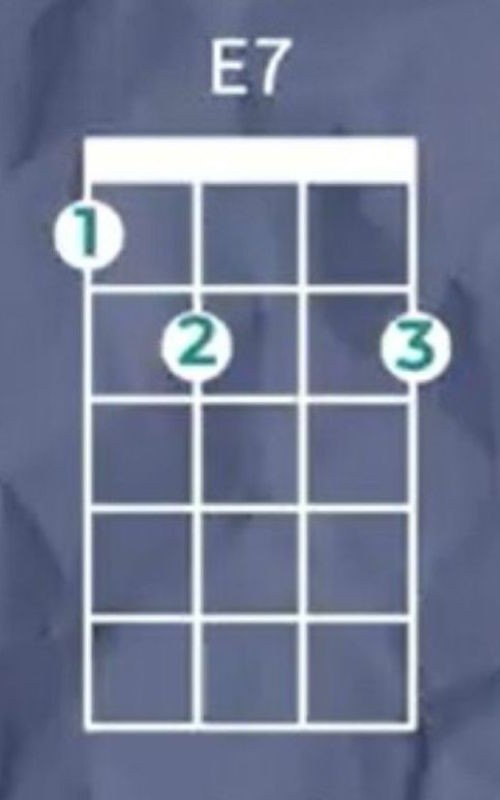
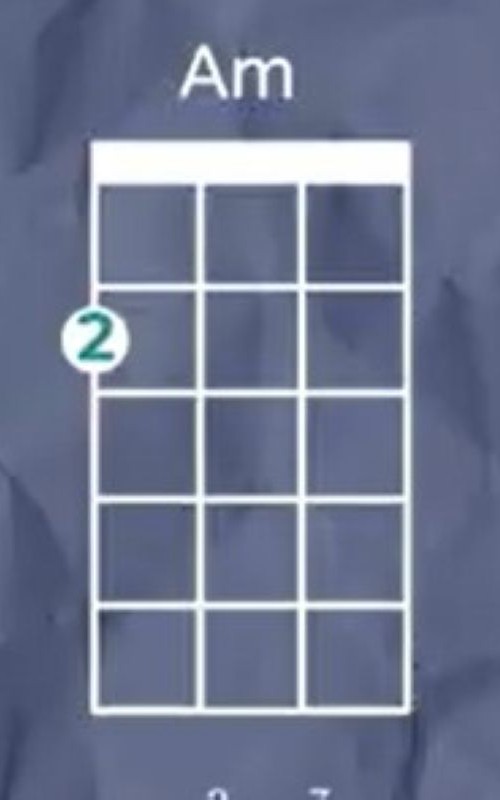
Here’s how it sounds in A major (with E7 as the second chord):
- [A] Mary had a little lamb,
- [E7] Little lamb,
- [A] Little lamb
- [A] Mary had a little lamb
- [E7] Its fleece was white as [A] snow.
It sounds exactly how you’d expect—cheerful and simple.
Now let’s swap A major for A minor and play the exact same melody.
- [Am] Mary lost her little lamb,
- [E7] Little lamb,
- [Am] Little lamb
- [Am] Mary lost her little lamb
- [E7] Its fleece was white as [Am] snow.
Do you hear how the vibe shifts? I like to do this with my students without saying anything at first, just play both versions and let them feel the contrast. It’s a powerful example of how harmony changes the emotional tone of a song.
To our Western ears, major chords tend to sound happy, while minor chords feel sadder or more serious. That’s not a universal truth everywhere in the world, but for most of us, it’s how we’ve been trained to hear music.
Understanding Chord Structure
So what’s really inside a chord? I chose A major for this lesson because it lays out the notes in a really clean and easy-to-understand order when you strum from the top string down.
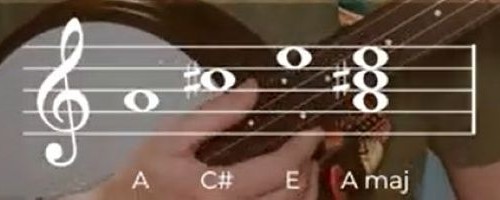
- Root = A
- Third = C♯
- Fifth = E
- Octave = A again
That’s what we call 1 – 3 – 5 – 8. If you’re brand new to this, just think of the numbers as the building blocks of the chord.
Now, if we take off the pointer finger and make it A minor, we get:
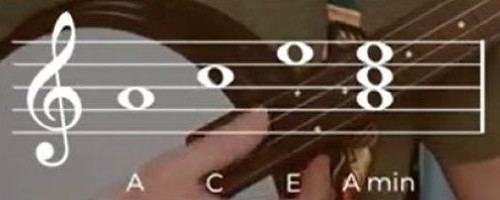
- Root = A
- Minor third = C
- Fifth = E
- Octave = A
The only difference is C♯ becomes C, but now the chord feels completely different.
Try This: Map the Chord Along One String
When I was first learning how chords were built, I actually found it easier to see them on a piano. The layout just made more sense visually. But you can totally do the same thing on the ukulele, one string at a time.

Let’s use the A string to map out the notes of the A major chord:
- Fret 2 = A (root)
- Fret 6 = C♯ (third)
- Fret 9 = E (fifth)
- Fret 14 = A (octave)
Now let’s do A minor:
- Fret 2 = A
- Fret 5 = C
- Fret 9 = E
- Fret 14 = A
If you’ve got a soprano uke, you might not even have fret 14, but you’ll still get the idea. Play those notes one at a time and you’ll start to really hear how the third, C or C♯, affects the overall color of the chord.
Learn more about the ukulele fretboard here.
The Bigger Picture: Major and Minor in Every Key
In every key, whether it’s C, A, D, or anything else, you’ll find a mix of major and minor chords. In fact, each key usually has:

- 3 major chords
- 3 minor chords
- 1 diminished chord (we’ll save that one for another lesson)
That’s a pretty even split and that’s no accident. Music is all about contrast, and major and minor chords are the tools we use to create emotional movement in a song. One isn’t more important than the other. They just serve different purposes.
Try This Exercise on Your Own
If you want to get a better feel for major and minor chords, here’s something you can do:
- Pick a chord you already know, say, C.
- Learn both the C major and C minor versions.
- Play them one after the other and listen for the mood shift.
- Try rewriting a song you know in minor instead of major or vice versa.
You’ll be amazed at how much you can change the feel of a tune just by changing one note in a chord.
Final Thoughts: One Note Can Change the Whole Story
I hope this lesson helped you not just hear the difference between major and minor chords, but also understand why that difference matters.
It’s all about emotion. When I teach this concept, I want you to feel how one little note can change a whole song from happy to heartbreaking, from silly to serious.
So go experiment with your chords. Try them in different orders, swap major for minor, and listen closely. You’ll start to hear stories in your music and that’s where the real fun begins.
Want to see all this in action? I walk through each step (and strum) in the full video lesson, so be sure to check that out if you haven’t already.
Until next time, happy strumming!

John Allnutt
Writer & Ukulele TeacherJohn has been teaching music since 2008 and resides in Richmond, Kentucky with his wife Laura and dog Sam. In his spare time he enjoys growing and cooking food, roasting coffee, playing board games, and spreading joy through playing and teaching music.


